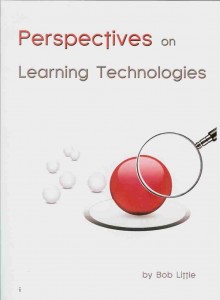There’s a tendency to do ‘just-in-case’ training rather than ‘just-in-time’ training. In other words, people are given access to learning materials in case they ever need to know what they’re being taught.
Key issues in today’s workplace are the pace of change; the appearance of broader and more complex job tasks, and the question of whether learning should be just-in-case or just-in time. If you opt for ‘just-in-time’ learning, you’re opting for performance support.
This can be applied to:
- Organisations: their structure, products and knowledge
- Office technology
- Business: applications and processes
- ‘Dynamic issues’: competitors, marketing and technical
Where required knowledge levels are low – typically from zero to 20 per cent – the most effective way to create this knowledge level is via training, using online materials, workshops, coaching, drill and practice. Where the required knowledge level is between 20 and 70 per cent, the most effective way to create this is via performance support, encompassing online and offline reference materials, drill and practice. And where the required knowledge levels exceed 70 per cent, the most effective ways to achieve this are via learning: reference materials, direct support, virtual campus and learning communities.
To check you’re doing the right thing at the right time where a learning programme is concerned, use the acronym ‘PRIDE’:
- Promoted – not just how is the learning programme marketed and advertised, but is the programme a part of the culture of the organisation?
- Relevant
- Instructionally sound – not just is it well designed, but is the content always sound in the light of current developments. In addition, you need to check on the way that the trainers and tutors are putting over and/or supporting the programme.
- Demonstrate value – does this piece of learning demonstrate value (however that can be defined) within the organisation?
- Effective – is it doing what you want?
This approach can’t overcome the ‘politics’ that exists in organisations but, all other things considered, it can help to arrest the decline phase of the programme lifecycle.
Pieces of learning have a natural lifespan. For example, you know when a job aid has worked – because the people throw it away. However, to keep learning going, you need flexibility – or change – within the delivery media.
All learning delivery media are flexible, although some are more flexible than others. Generally speaking, the more inflexible the media, the higher the cost involved in changing it. Costs associated with changing delivery media include changing the content, testing the programme and deploying the programme – all of which have their own issues.
Often, when people produce a learning programme, they think of what’s expensive to do in the first place. They don’t think of what’s expensive to change.
The key points here are to remember the ‘PRIDE’ acronym; use transition media where appropriate; draw together disparate elements of information within the organisation to make new learning materials – and keep focused on results.
This article has been adapted from the contents of chapter 10 of Bob Little’s e-book, ‘Perspectives on Learning Technologies’ (e-book; ASIN: B00A9K1VVS). This e-book is available from The Endless Bookcase and from Amazon. It contains over 200 pages of observations on issues in learning technologies, principally for learning & development professionals.







Leave A Comment
You must be logged in to post a comment.